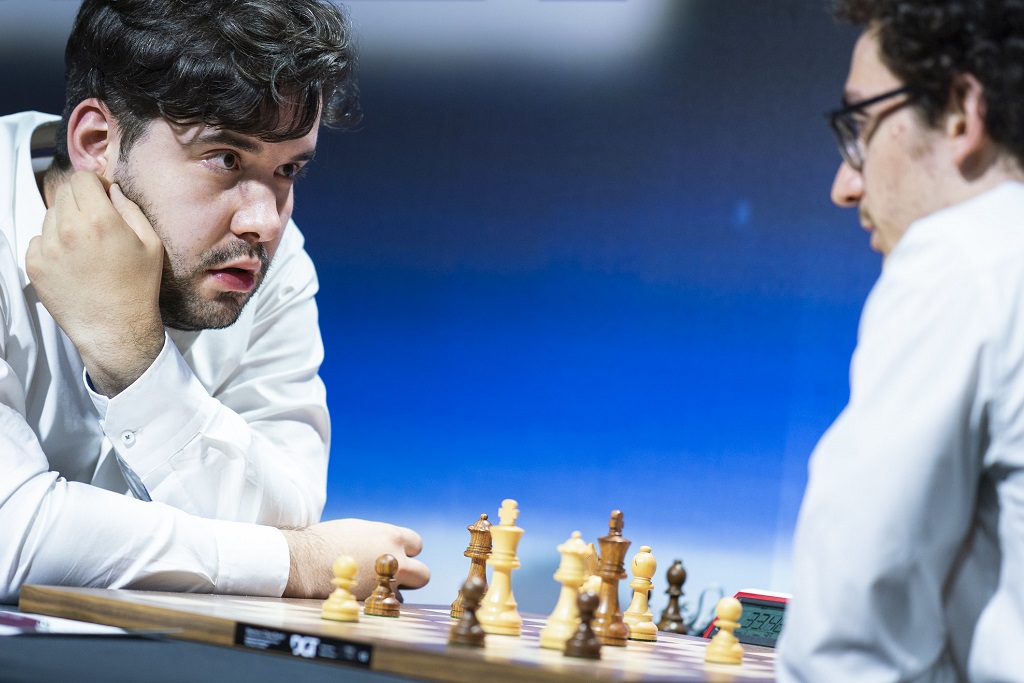


On opening day at the second leg of the 2019 Grand Chess Tour, Ian Nepomniachtchi found himself in a complicated position out of the opening against Vishy Anand, but managed to bounce back and eventually got a 32-move victory with Black. The Russian ace then went on to recover from an even worse position in round two, against Fabiano Caruana, and is now the sole leader in Zagreb.
But Caruana was not the only player to squander an advantegeous position on Thursday. Magnus Carlsen simplified into an endgame a pawn up against Vishy Anand but could not convert it into a win despite trying for 72 moves, while Ding Liren split the point with Sergey Karjakin after getting a strong initiative by giving up an exchange.
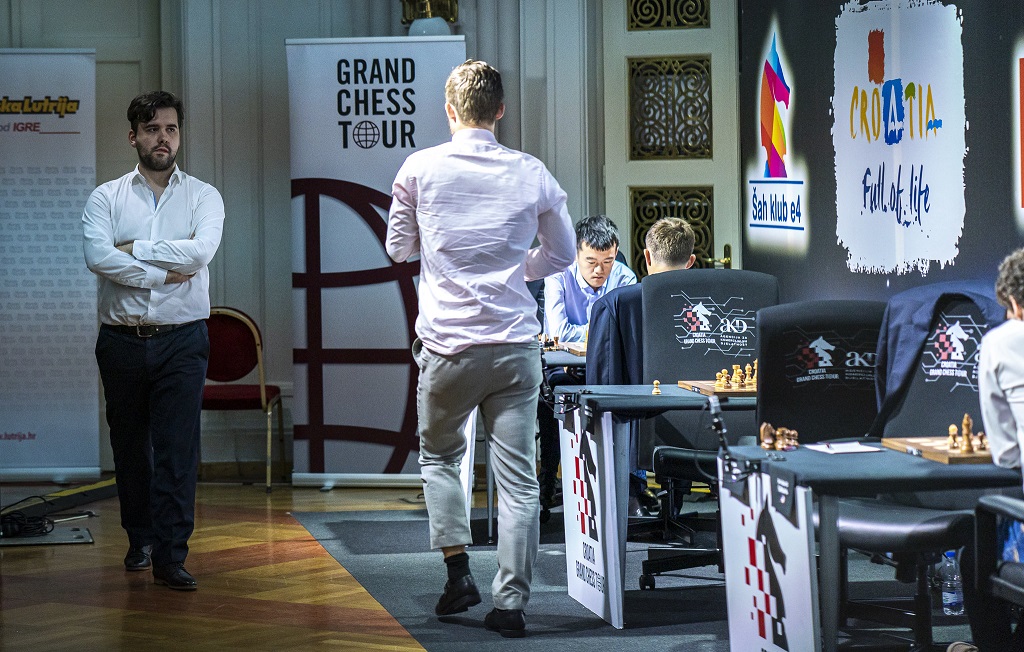
Ian Nepomniachtchi and Magnus Carlsen crossing paths during round two | Photo: Lennart Ootes / Grand Chess Tour
After Magnus Carlsen got good results with the Sicilian Sveshnikov at last year's World Championship match — and all through 2019 subsequently — his rival from said match, Fabiano Caruana, decided to give it a go with Black against Ian Nepomniachtchi. The players followed mainstream theory until move nine, repeating what had been seen in the London match and in many first-rate games from this year, including Svidler v Caruana from the Grenke Classic and Nepomniachtchi v Carlsen from the Abidjan GCT event.
The position got increasingly sharper, especially when Nepomniachtchi decided to castle queenside on move 20:
Caruana immediately put his bishop on the long diagonal with 20...♝f6, targeting White's king position — later on, he also gave up his a-pawn in order to open up that file for his rook. The American had his pieces lined up for an attack, but he did not find the most effective continuation in a critical position:
Black's 30...♞xc3 does not give away the advantage but both 30...♝b5 and 30...♞c5 were better — and safer — alternatives. After the text, there followed 31.bxc3 ♝a4+ 32.♔b1 ♝xd1, when Black still had the upper hand with the rook and pawn against White's two pieces.
But converting this position against Russia's number one was never going to be easy. Caruana did not find the precise way forward and the computer started showing a 0.00 evaluation. By move 38, it was Caruana who needed to find an only move to keep the equality:
The only way to maintain the balance was with 38...♝c1+ as 39.♘xc1 is met with 39...♛g2, getting back the piece, defending the e4-pawn and doubling on the second rank. Instead, Black played 38...♛c4, allowing White to capture the d-pawn with 39.♕e6 ♝f6 40.♕xd6.
With three pieces protecting his king, White started pushing his d-pawn, which turned out to be a more valuable asset than Black's passer on the e-file. The game finished on move 50:
Caruana resigned after 50.♕xf6, as the d-pawn will inevitably become a queen.
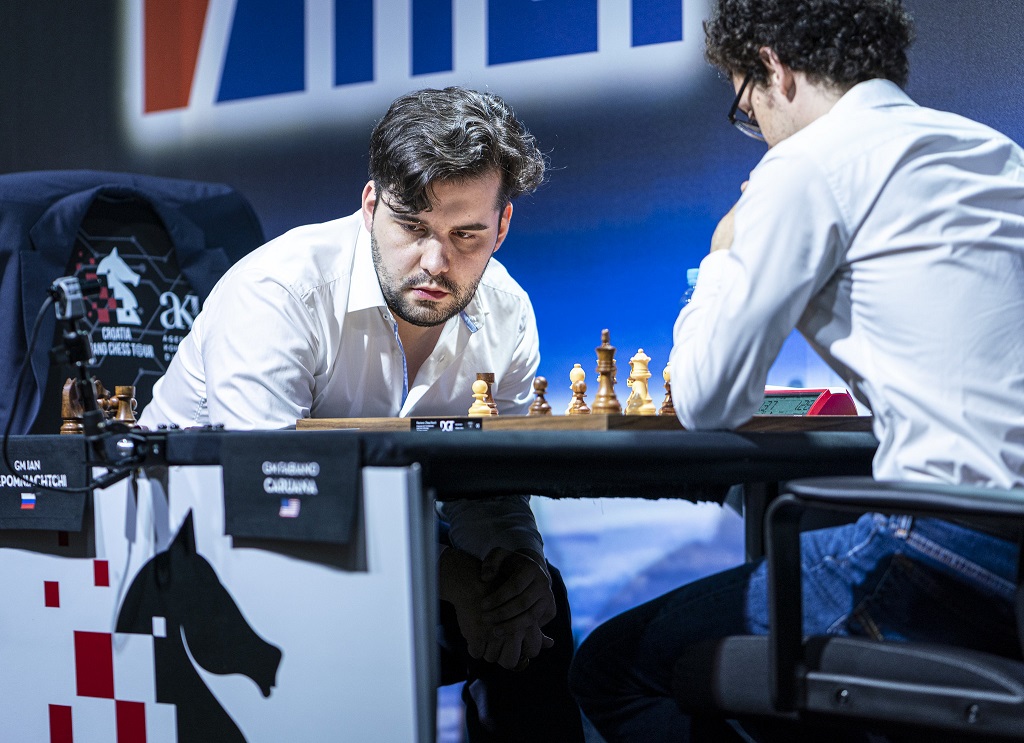
The current leader in Zagreb, Ian Nepomniachtchi, had to work hard against Fabiano Caruana | Photo: Lennart Ootes / Grand Chess Tour
It has been a while already, but we must not forget that the last world champion prior to Magnus Carlsen was Vishy Anand. The Indian will turn 50 this year and is still going strong, currently placed ninth in the official FIDE ratings list. Unfortunately for him, though, on Thursday he had Black against Carlsen for a fifth time in a row, a daunting task for any human alive at the time.
The "Tiger of Madras" went into a theoretical line of the Vienna Variation out of a QGD and, by move 19, found himself in a slightly inferior position from a strategical point of view:
Carlsen, naturally, started looking for a way to get something with White, making use of Black's slightly damaged pawn structure. The world champion kept putting pressure on his opponent until gaining a pawn on move 36. Soon enough, all the rooks had left the board and White was a pawn up in a knight's endgame:
White has a passer on the f-file and an active king — it was not difficult to predict a Carlen's win at this point, especially given the phenomenal form he has shown this year. But Anand is a fighter at heart and kept looking for chances until the end. Carlsen was not as precise as the position called for and eventually gave up half a point, despite temporarily being a queen and a knight up:
This endgame is actually a draw. Anand continued to show correct technique until signing the peace treaty after 78 moves.
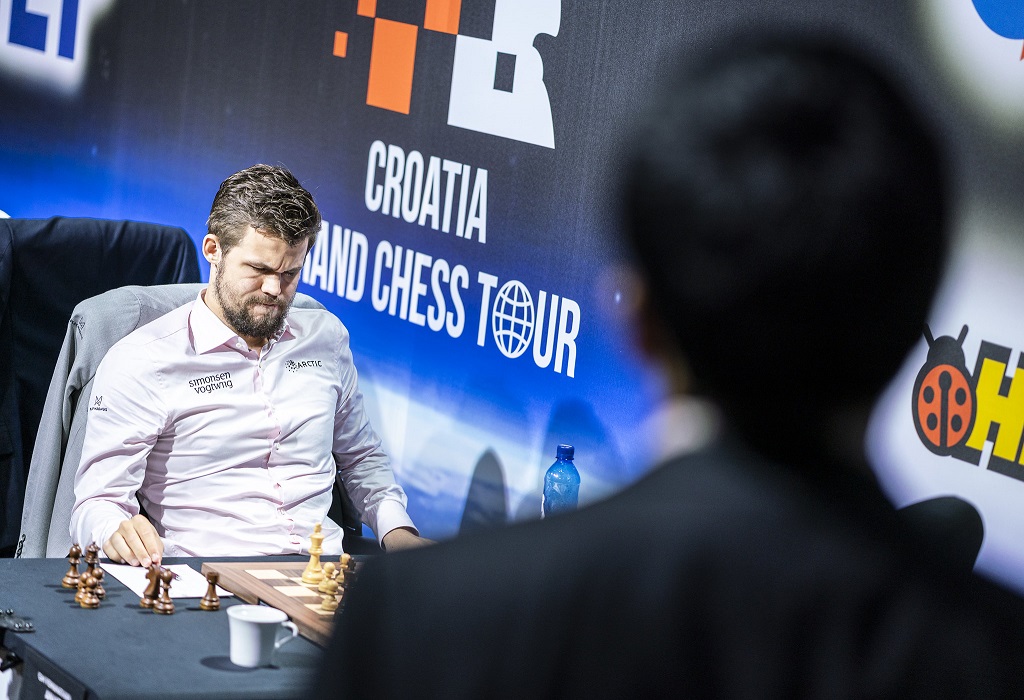
World champion Magnus Carlsen could not break Vishy Anand's defences | Photo: Lennart Ootes / Grand Chess Tour
Meanwhile, Ding Liren was trying to create a model game with the white pieces against Sergey Karjakin. After thinking for over eleven minutes, the Chinese star decided to give up an exchange in order to get the initiative against Black's undeveloped army:
Although 19.bxc4 is totally playable, Ding felt 19.♘xc4 was worth a try, given the fact that Black's dark-squared bishop is his best-placed piece on the board. Karjakin accepted the challenge by responding with 19...♝xc1.
In the battle that ensued, Black lost his kingside pawns (except the one on the h-file) and found himself defending against a set of well-coordinated attackers. However, Ding could not find the right idea in a critical position:
Here, and at some other points of the game, the computer suggested that the best course of action was to opt for 38.♗c4, when exchanging the pieces would be bad for Black, while the white bishop would be excellently placed on the a2-g8 diagonal otherwise. Ding chose 38.g4 instead, and Karjakin went on to prove his defensive prowess until getting a 51-move draw.

Ding Liren apparently knew that he had thrown away a great chance | Photo: Lennart Ootes / Grand Chess Tour
The other three draws of the day were less eventful, with both Wesley So vs Maxime Vachier-Lagrave and Hikaru Nakamura vs. Shakhriyar Mamedyarov lasting less than thirty moves. Levon Aronian and Anish Giri played a rook endgame with 3 v 2 pawns on the same flank until move 55, but the result was never in doubt.
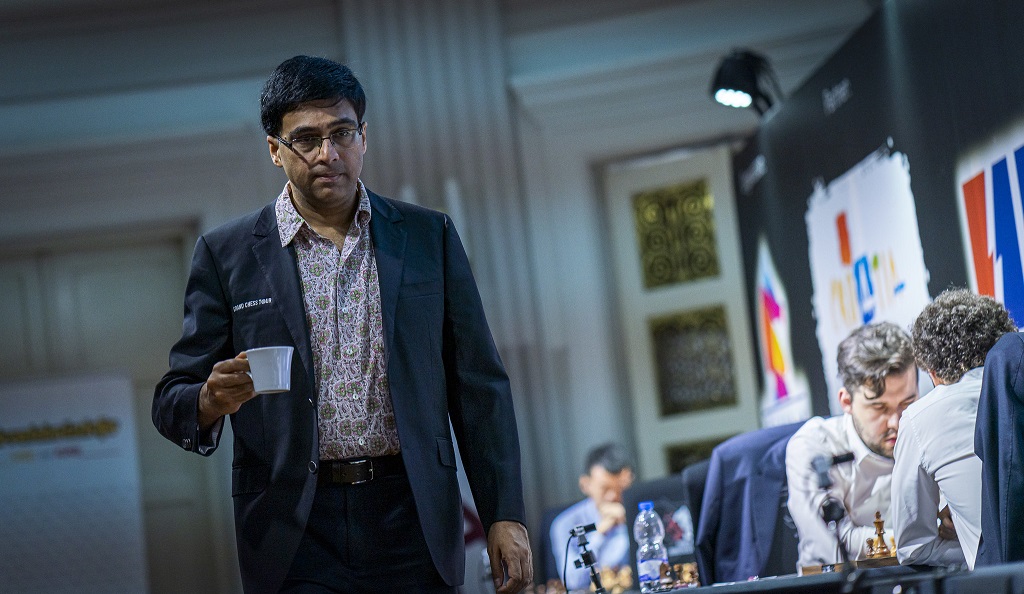
Former world champion Vishy Anand taking a stroll | Photo: Lennart Ootes / Grand Chess Tour
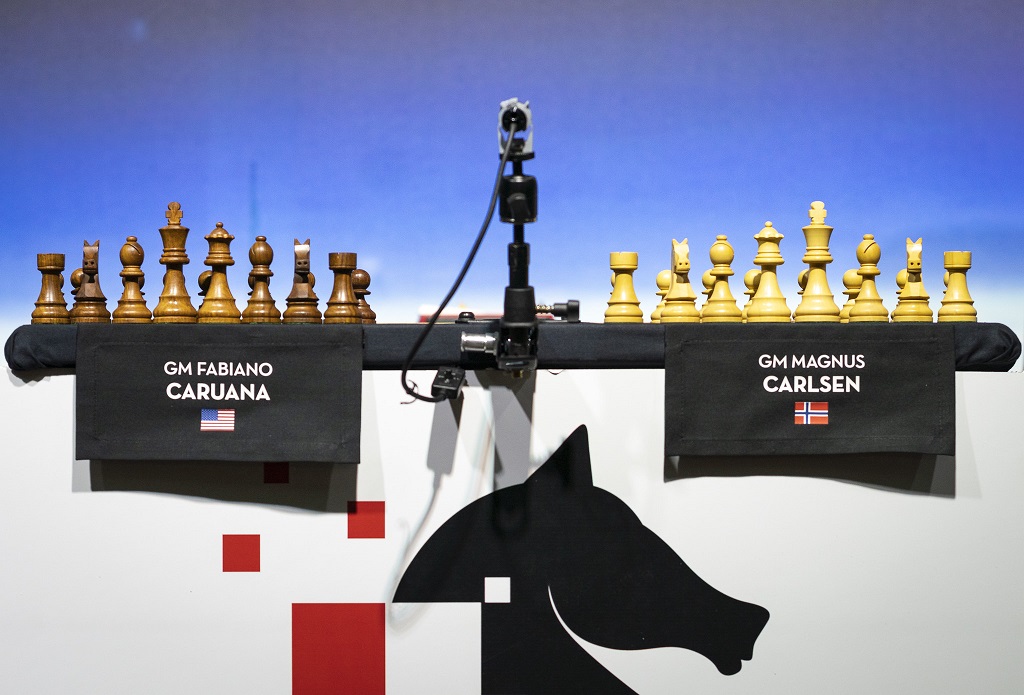
The board is already set up for the top game of round three | Photo: Lennart Ootes / Grand Chess Tour
Commentary by GM Yasser Seirawan, IM Jovanka Houska and GM Alejandro Ramirez